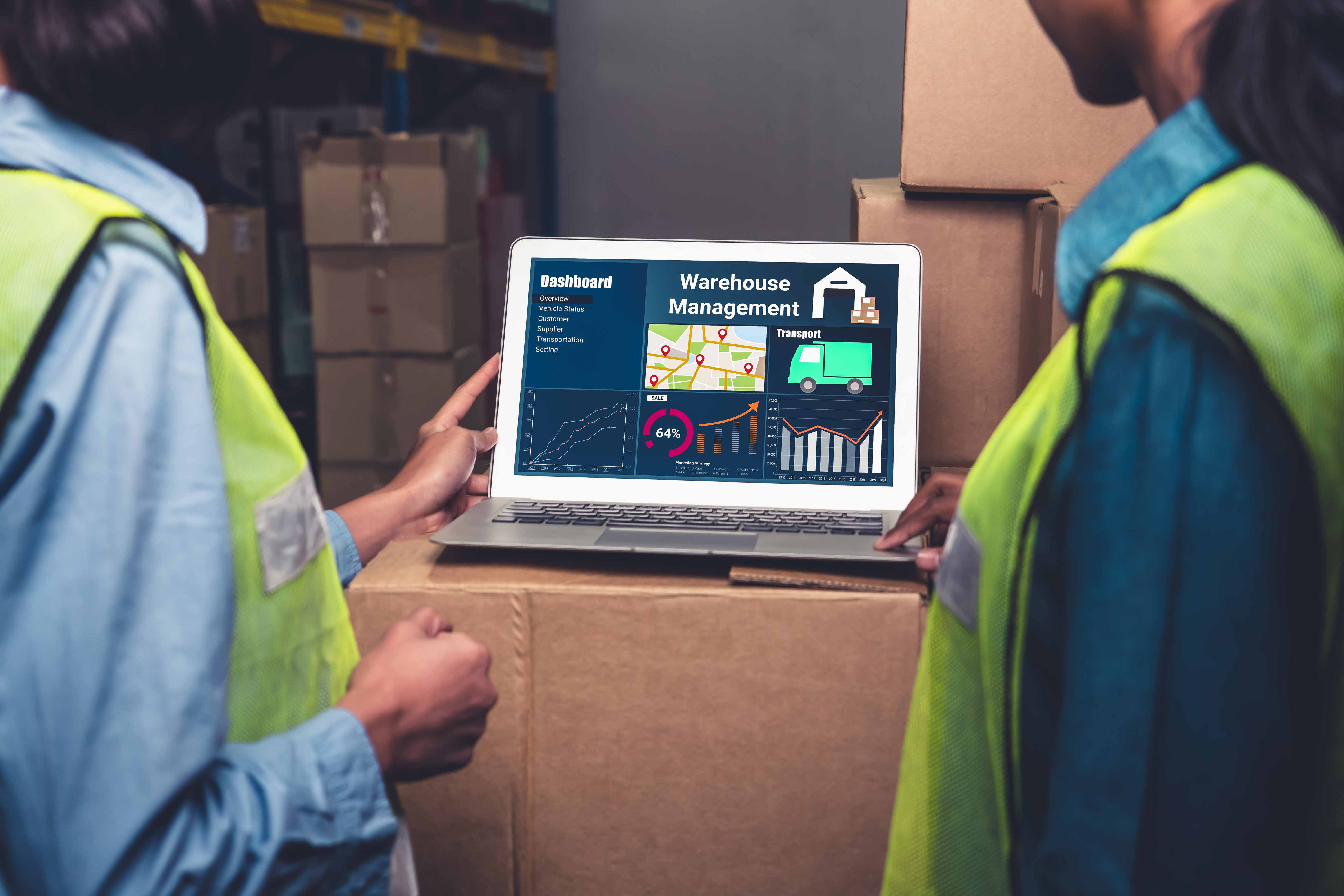

Inventory Management Tech Reaches a Turning Point
By Grainger Editorial Staff 3/17/21


To better understand trends in supply chain management, Grainger interviewed five thought leaders in the logistics industry, including executives at national shipping and transportation firms and leading academics in supply chain management. The interviews, conducted in November, 2020, revealed that the COVID-19 pandemic may be a turning point for the industry.
Academics and industry executives are preparing for a future where supply chains are digitized, transactions are verified by blockchain, package handling is automated, and 3D printing moves production to the point of consumption.
Disrupting Business As Usual
When the COVID-19 pandemic arrived, inventory managers were thrust onto the front lines of the crisis. Managers told us of supply chains strained for critical medical supplies like PPE and cleaning equipment, and logistics experts saw a sudden shift in the way consumers shopped for household staples.
Interviews with industry leaders showed a sector fighting to supply vital goods to the public while keeping their own employees safe from contagion.
Grainger Inventory Management Report: Download our 2022-23 report based on a survey of 300 Grainger customers | Get the original 2021 report
Disruptions due to COVID-19 also caused shipping executives to reflect on the path forward. Many described how the crisis had demonstrated the importance of real-time data and supply chain visibility. Social distancing guidelines placed a premium on low-touch automated handling technology, and leading businesses began to plan for a more resilient, diversified supply chain.
Adapting to the Outbreak
In the wake of the pandemic's disruptions, the industry has adapted and moved ahead. Many of the nation’s largest shipping and warehousing facilities did not close for a single day during the outbreak, their work being essential to the nation’s pandemic response.
That’s not to say it was easy: the coronavirus outbreak impacted the entire industry, as shipments of high-demand products like PPE were delayed or out of stock in the early days of the pandemic. “We probably had the worst time that I've seen here,” a transportation executive said. “We were so overwhelmed in so many different areas.”
“People will rethink how to create these supply chains,” said an information systems researcher. “From a cost-benefit analysis, they might want to have closer suppliers in the case of disruptions.”
Facing unpredictable lead times, one transportation executive reported keeping a larger buffer stock of critical products like gloves and surgical face masks, which had suddenly become an indispensable part of warehouse operation. “We've kept additional inventory,” he said. “We’ve seen a 35% increase of our use of PPE and hand sanitizers, so we built up a four-month supply.”
Data Drives the Industry Forward
There was a broad consensus that inventory management is undergoing dramatic changes, and the pandemic only accelerated the industry’s transformation. Several experts emphasized the need for more data to handle just-in-time sourcing. “If you're going to try to take a large inventory off your balance sheet, real-time supply chain management requires a lot of information,” said an advisor at a supply chain research institute. “You need a dashboard level of visibility as to where each part is.”
“The move to Just In Time (JIT) production requires technology that allows you to track inventory in real-time,” said an academic researcher. “Most large production is a synchronous event that requires part A to arrive before part B and part C in order to start assembly.”
Finding ROI in Automation
Social distancing illustrated the value of low-touch automated systems that can sort and prep shipments without bringing staff into close contact. “From the perspective of anybody in the supply chain industry, I think that we're going to see a huge shift towards automation,” said one transportation executive, but one of his colleagues added a caveat: “The barrier to actually automating is that it requires a ton of initial investment.”
An information systems professor believes COVID-19 has forced the pace of change to accelerate. “Companies have gone through five to 10 years of transformation in a couple months,” he said. “The fact that they can't have the same workforce means that they need to start thinking about solutions that use AI or robotics, or automation.”
Logging on to the Internet of Things (IoT)
A growing reliance on real-time data has inventory managers racing to digitize their supply chains and integrate legacy management systems. One transportation executive said RFID tracking has changed his operation. “If I have a pallet with 20 different products coming off of an inbound truck, then the moment it hits the dock, a scanner inventories that product in,” he said. “Being able to actually look and see where everything is in the network at any given time gives me real-time visibility,” he said. “I know for a fact that I have a certain amount of product coming in on this truck that just got dispatched, and that lets me plan accordingly and make staffing decisions as it's happening.”
But getting the most out of real-time data requires more than adding new sensors. “You really don't get the technology’s full potential without integrating the computer management systems,” the executive said. “And for a lot of companies I've worked with, there has been the issue of running into legacy systems. If they built their own proprietary system in the past, they’ll have to build everything else that integrates with it.”
Moving into Digital Assets
Although futuristic technologies like artificial intelligence or additive manufacturing may seem far from maturity, the academic researchers Grainger interviewed saw the long-term potential of a fully digitized supply chain, where assets are transported digitally and printed on demand as close to the point of consumption as possible.
“Dealing in digital assets maximizes flexibility in your supply chain,” said one researcher. By adding 3D printing at the point of consumption, “you’re able to push manufacturing costs downstream, and the product isn’t creating inventory drag or downdraft on the balance sheet.”
Another professor of information systems identified a leading indicator for the digital supply chain. “Look at the number of 3D printers being sold right now,” he said. “The timelines on companies’ tech roadmaps are accelerating, because there is a need to transform into this digital space.”
Blockchain technology is also maturing rapidly. “Everybody wants to track and trace,” said one researcher, “from their coffee beans to their tennis shoes. With tools like blockchain, you're able to create integrity.”
Developing a Workforce for the Future
With the industry changing so rapidly, several executives believed continuous lifetime learning is the key to maintaining a workforce that is capable of mastering new technologies. “For someone who is working and wants a part-time certification, programs like the CSCP [Supply Chain Professional Certification] can give you a good overview of all the elements you should be thinking about in the supply chain.”
Other companies are taking a more flexible approach to training specific skills. “A lot of our training is on the job, because every system is different,” said one transportation executive.
The information contained in this article is intended for general information purposes only and is based on information available as of the initial date of publication. No representation is made that the information or references are complete or remain current. This article is not a substitute for review of current applicable government regulations, industry standards, or other standards specific to your business and/or activities and should not be construed as legal advice or opinion. Readers with specific questions should refer to the applicable standards or consult with an attorney.







